Cruise News and Updates
The Evolution of Bayport Cruise Terminal
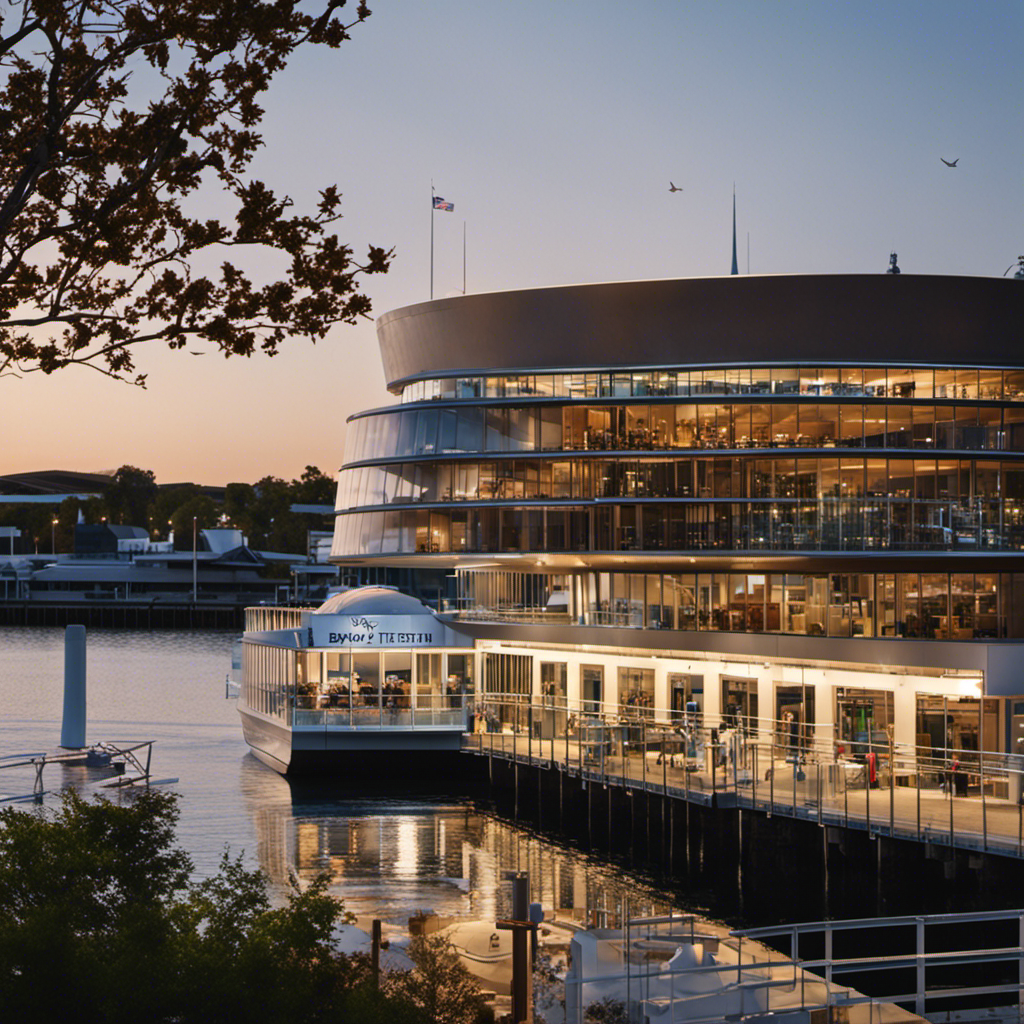
You could be curious – is there anything notable to talk about regarding the Bayport Cruise Terminal?
Well, let me tell you, this place has had quite the journey. From its troubled beginnings to its current state as a roll on/roll off facility, the evolution of the Bayport Cruise Terminal is nothing short of fascinating.
Despite facing challenges like competition from Galveston and its unattractive surroundings, this terminal has managed to adapt and survive.
So, let’s dive into the detailed, factual, and analytical account of how the Bayport Cruise Terminal has transformed over the years.
Key Takeaways
- Bayport Cruise Terminal initially struggled to attract cruise lines and faced criticism for its high cost.
- After a period of success, with increased passenger numbers, Princess Cruises and Norwegian Cruise Line stopped sailing from Bayport, leading to its decline as a cruise port.
- The terminal was repurposed as a roll on/roll off facility for cargo, specifically for automobiles, and is now leased by Auto Warehousing Company.
- The surrounding area is industrial and not attractive for tourism, and the terminal is heavily guarded and fenced off, facing challenges such as competition from Galveston and difficulties establishing itself as a successful cruise port.
Early Challenges and Controversies
I struggled to attract cruise lines and faced criticism for my high cost of over $100 million. Bayport Cruise Terminal, located 25 miles northwest of Galveston, became operational in 2008.
Despite its convenient location for passengers flying into Houston, the terminal faced financial struggles and public perception wasn’t favorable. The hefty price tag raised eyebrows and led to skepticism about its viability. As a result, it initially struggled to attract cruise lines.
However, in 2013, Princess Cruises and Norwegian Cruise Line started sailing from Bayport, bringing some success. But the triumph was short-lived as both cruise lines ceased operations in 2016. The terminal’s troubled history, marked by competition from Galveston and the longer journey to open water, added to its challenges.
Despite these hurdles, the terminal has evolved and now serves a different purpose as a roll on/roll off facility for cargo.
Arrival of Cruise Lines
Princess Cruises and Norwegian Cruise Line began operating at the Bayport facility in 2013, bringing an increase in passenger numbers. This cruise line partnership had a significant impact on the local economy.
The influx of tourists resulted in a boost for local businesses, such as hotels, restaurants, and shops, as well as creating job opportunities for residents. The increased foot traffic also contributed to increased tax revenue for the area.
Additionally, the arrival of these major cruise lines helped put Bayport on the map as a cruise destination, attracting more attention and potential investment.
The partnership between Princess Cruises and Norwegian Cruise Line not only provided a positive economic impact but also helped establish Bayport as a viable player in the cruise industry.
Rise and Fall of Passenger Numbers
The increase in passenger numbers from 26,904 in 2013 to 125,856 in 2015 showcased the initial success of the Bayport facility before its decline.
However, the popularity of the Bayport Cruise Terminal started to decline, largely due to the impact of Galveston, the main cruise port in the area. The competition from Galveston, which offered a more convenient location and a shorter journey to open water for cruise ships, posed a significant challenge for Bayport.
Additionally, the industrial surroundings of the Bayport Terminal did not appeal to tourists, further contributing to its declining popularity.
Despite some success in attracting cruise lines initially, the Bayport facility struggled to establish itself as a successful cruise port in the long run.
Transition to Roll On/Roll Off Facility
Leased by Auto Warehousing Company, the facility was repurposed as a roll on/roll off facility for cargo like automobiles. It was a necessary transition after the departure of cruise ships.
The challenges faced by the Bayport Cruise Terminal were substantial. The heavy competition from Galveston, the main cruise port in the area, posed a significant hurdle. Additionally, the longer journey to and from open water for cruise ships proved to be a drawback. The terminal also faced criticism for its location and cost, as well as the unattractive industrial surroundings that did not appeal to tourism.
Despite these challenges, the future prospects for the roll on/roll off facility seem promising. The facility is now filled with new automobiles, serving its new purpose efficiently. With its adaptation to handle roll on/roll off cargo, the Bayport Cruise Terminal has found a new lease on life.
New Purpose for Bayport Cruise Terminal
After the transition, I can see that the facility has successfully adapted to handle roll on/roll off cargo. The Bayport Cruise Terminal, once struggling to attract cruise lines, has found a new purpose as an import yard for vehicles.
The terminal, leased by the Auto Warehousing Company, is now bustling with cars, trucks, and tractors inside. The surrounding area may not be attractive for tourism, but the distinctive blue roof of the terminal is still recognizable.
Despite the challenges it faced as a cruise port, the revitalization plans for the facility have had a positive economic impact. The repurposing of the terminal has brought new life and activity to the area, providing employment opportunities and contributing to the local economy.
Current State of the Terminal
The Bayport Cruise Terminal has undergone a significant transformation since its days as a struggling cruise port. Today, the terminal serves a different purpose as a roll on/roll off facility for cargo, specifically automobiles. As I stand here at the terminal, surrounded by industrial surroundings, it is evident that the area has adapted to handle the new demands of the automotive industry.
The distinctive blue roof of the terminal is still recognizable, but signs prohibiting photography and video inside the terminal indicate its heavily guarded nature. The terminal is busy with cars, trucks, and tractors moving in and out, showcasing its current state as a bustling hub for cargo operations.
While the future plans for the terminal remain uncertain, given its challenges in establishing itself as a successful cruise port, the adaptability and functionality of the facility make it a promising candidate for further development. With its proximity to Houston and existing infrastructure, the Bayport Cruise Terminal holds potential for future growth and expansion in the cargo industry.
Competition and Location Concerns
As I consider the challenges faced by the Bayport Cruise Terminal, one of the main concerns is the heavy competition from Galveston, the primary cruise port in the area. This competition poses significant concerns for the terminal’s success and growth. The impact of location and the difficulties it brings are evident in the struggles faced by Bayport.
Here are some key points to consider:
-
Competition Concerns:
-
Galveston, the main cruise port in the area, poses strong competition.
-
Bayport has faced difficulties in establishing itself as a successful cruise port.
-
Impact of Location:
-
The longer journey to and from open water for cruise ships is a challenge.
-
The industrial surroundings of Bayport are not appealing for tourism.
These competition concerns and the impact of location create hurdles for the Bayport Cruise Terminal to overcome in order to thrive in the cruise industry.
Industrial Surroundings and Tourism
After exploring the challenges faced by the Bayport Cruise Terminal in terms of competition and location concerns, it is important to consider the impact of its industrial surroundings on attracting tourists and the local economy.
The terminal is situated in an industrial area, which may not be appealing to tourists seeking a scenic and leisurely experience. The surrounding environment consists of factories, warehouses, and heavy machinery, giving it an industrial and utilitarian feel. This lack of aesthetic appeal could potentially deter tourists from choosing the Bayport Cruise Terminal as their preferred embarkation point.
As a result, the terminal may struggle to generate the desired economic benefits for the local community. Without a vibrant tourism industry, the terminal’s ability to contribute to the local economy may be limited, further highlighting the challenges it faces in establishing itself as a successful cruise port.
Reflections on Bayport’s Evolution
Looking back, I can’t help but reflect on how Bayport has transformed over the years. It has faced numerous challenges, but it has also undergone a significant transformation.
Here are three key aspects of Bayport’s evolution:
-
Struggles with competition: Bayport Cruise Terminal faced heavy competition from Galveston, the main cruise port in the area. This, coupled with the longer journey to and from open water for cruise ships, posed significant challenges for Bayport’s success as a cruise port.
-
Industrial surroundings: The industrial surroundings of Bayport have proved to be a deterrent for tourism. The area is not visually appealing, with signs prohibiting photography and video inside the terminal. The terminal is heavily guarded and fenced off, creating an uninviting atmosphere for visitors.
-
Adaptation to new purpose: Despite the challenges faced, Bayport has adapted to a new purpose as a roll on/roll off facility for cargo like automobiles. The terminal has been leased by the Auto Warehousing Company and now serves as an import yard for vehicles. This transition has allowed Bayport to continue operating and contribute to the local economy.
Bayport’s transformation has been marked by challenges and hurdles, but it has managed to adapt and find a new purpose in the face of adversity.
Frequently Asked Questions
What Were Some of the Early Challenges and Controversies Faced by the Bayport Cruise Terminal?
Early controversies and terminal challenges included struggling to attract cruise lines, criticism for its cost, and competition from Galveston. The location and industrial surroundings made it difficult to establish as a successful cruise port.
How Did the Arrival of Cruise Lines Impact the Terminal’s Operations?
The arrival of cruise lines at Bayport Cruise Terminal brought an initial boost in tourism and economic benefits. However, their departure highlighted the terminal’s struggles, including heavy competition, longer journeys, and unattractive surroundings.
What Factors Contributed to the Rise and Fall of Passenger Numbers at the Terminal?
Economic factors and changing travel trends played a role in the rise and fall of passenger numbers at the terminal. Increased competition from Galveston and the longer journey to open water also affected its success.
How Did the Terminal Transition From a Cruise Facility to a Roll On/Roll off Facility?
The terminal transitioned to a roll on/roll off facility after the departure of cruise ships. It was repurposed for cargo like automobiles and leased to Auto Warehousing Company. This expansion had a positive economic impact on the area.
What Is the Current Purpose and State of the Bayport Cruise Terminal?
The Bayport Cruise Terminal currently serves as a roll-on/roll-off facility for cargo, specifically automobiles. It faced challenges such as heavy competition from Galveston, longer journeys for cruise ships, and criticism for its location and cost.
Meet Asra, a talented and adventurous writer who infuses her passion for exploration into every word she writes. Asra’s love for storytelling and her insatiable curiosity about the world make her an invaluable asset to the Voyager Info team.
From a young age, Asra was drawn to the power of words and their ability to transport readers to far-off lands and magical realms. Her fascination with travel and cultures from around the globe fueled her desire to become a travel writer, and she set out on a journey to turn her dreams into reality.
Cruise News and Updates
How Old Do You Have To Be To Work On A Cruise Ship

Hello! Have you ever imagined yourself working on a luxurious cruise ship, sailing across the open seas, and discovering remote destinations? Today, I aim to answer a crucial question: What is the minimum age requirement to work on a cruise ship? Whether you’re a young individual seeking your first job or an experienced professional seeking new opportunities in the maritime field, this article is tailored to meet your needs.
We’ll delve into the minimum age requirements for various job roles, including entry-level positions perfect for young adults seeking valuable work experience. And hey, if you’re a college student itching to make some money during summer break, we’ve got some exciting positions lined up just for you too!
But that’s not all – we’ll also explore career opportunities for professionals in the cruise industry and discuss age limits for working in different departments on board. Plus, we’ll touch upon positions with specific responsibilities and even highlight part-time options for retirees looking to stay active.
So buckle up and prepare to set sail on a journey through the world of cruise ship employment. Let’s navigate these waters together!
Key Takeaways
- Entry-level positions on cruise ships such as deckhands, pool attendants, and junior entertainers can be available for individuals as young as 16 with work permits and parental consent.
- Retirees have the opportunity to work part-time on cruise ships, combining their passion for travel with earning income. There are various roles available catering to different skill sets and interests.
- Entertainment roles on cruise ships typically require a minimum age of 18 to ensure necessary maturity and experience for performers or dancers.
- Medical department positions on cruise ships often have higher age requirements, usually set at 21 years or older, due to the level of responsibility involved and the extensive medical training and experience required.
Entry-level positions for teenagers
So, you’re probably wondering if there are any entry-level positions available for teenagers on a cruise ship. Well, the good news is that there are indeed opportunities for young individuals to work on a cruise ship.
Teenagers can typically apply for positions such as pool attendants, food servers, or housekeeping assistants. These roles often have flexible work hours to accommodate their educational commitments and provide valuable experience in the hospitality industry.
As for wages, entry-level positions usually offer minimum wage or slightly higher, ensuring fair compensation for their work. However, it’s important to note that specific pay rates may vary depending on the cruise line and location of employment.
Now that we’ve covered entry-level options for teenagers, let’s dive into the minimum age requirements for various job roles onboard without skipping a beat.
Minimum age requirements for various job roles
To be eligible for different job roles on a cruise ship, there are specific age requirements that must be met.
For entry-level positions, such as housekeeping or food service, the minimum age is usually 18 years old. However, some cruise lines may consider hiring teenagers who are at least 16 years old with parental consent. It’s important to note that these positions may have limited availability for younger applicants.
On the other hand, entertainment roles on a cruise ship often require performers who possess a certain level of skill and experience. Therefore, the minimum age for these positions is typically higher than other entry-level jobs. In most cases, individuals must be at least 21 years old to apply for entertainment roles like singers, dancers, or musicians.
With these age restrictions in mind, let’s explore opportunities for young adults seeking work experience without missing out on valuable skills and growth opportunities in their desired field.
Opportunities for young adults seeking work experience
Looking for ways to gain valuable work experience as a young adult? There are several opportunities available that can help you build your skills and enhance your resume. One option is to explore summer internships on cruise ships. These internships allow you to work in various departments, such as hospitality or entertainment, and gain hands-on experience in a unique environment. Another option is remote work, which enables you to work from anywhere while still gaining valuable experience. Many cruise ship companies offer remote positions in fields like marketing or customer service. To give you an idea of the possibilities, here’s a table outlining some potential job roles and their corresponding work settings:
| Job Role | Work Setting |
|---|---|
| Hospitality | Onboard cruise ship |
| Entertainment | Onboard cruise ship |
| Marketing | Remote |
| Customer Service | Remote |
| Administration | Remote |
These opportunities provide young adults with a chance to develop essential skills while exploring different career paths. Speaking of career paths, let’s take a look at the positions available for college students on summer break.
Positions available for college students on summer break
If you’re a college student on summer break, there are a variety of positions available to gain valuable work experience and enhance your resume.
For example, did you know that 68% of college students find internships in their field of study during the summer? This is a great opportunity to apply what you’ve learned in the classroom to real-world situations.
Many cruise lines offer summer internships for college students, allowing them to work on various projects and gain hands-on experience in areas such as hospitality, marketing, or event planning.
Additionally, some companies offer remote work options for those who prefer to work from home or are unable to travel during the summer months. These internships provide an excellent chance for college students to develop skills, build professional networks, and explore potential career paths within the cruise industry.
Transitioning into the next section about career opportunities for professionals in the cruise industry…
Career opportunities for professionals in the cruise industry
The cruise industry offers exciting career opportunities that can ignite your passion and take you on a thrilling journey of professional growth and adventure. Whether you are just starting out in your career or looking for a change, the cruise industry provides a wide range of options for professionals who are eager to explore new horizons. From positions in hospitality and customer service to roles in entertainment, culinary arts, and ship operations, there is something for everyone.
One of the greatest advantages of working in the cruise industry is the opportunity for career growth. With international travel being a core aspect of this industry, professionals have the chance to broaden their horizons by experiencing different cultures and exploring exotic destinations. This not only enhances their skill set but also adds an element of excitement to their work.
In order to understand age restrictions for specific job roles on cruise ships, it is important to delve into the diverse range of positions available within this industry.
Age restrictions for specific job roles on cruise ships
As I mentioned earlier, the cruise industry offers a wide range of career opportunities for professionals. However, it’s not just limited to adults. In fact, there are entry-level positions available for teenagers as well. Many cruise lines offer programs specifically designed for young adults who are looking to gain experience in the industry while also exploring different parts of the world. These positions often include working in areas such as housekeeping, food service, and entertainment.
On the other end of the spectrum, there are also opportunities for retirees who are looking for part-time work. Cruise lines understand that many retirees have a wealth of knowledge and experience to offer and they actively seek out individuals who can bring their expertise on board.
So whether you’re a teenager looking to start your career or a retiree seeking new adventures, the cruise industry has something to offer everyone.
Now let’s dive into the age limits for working in different departments on board…
Age limits for working in different departments on board
Looking to embark on a career at sea? Sail into different departments on board and discover the age limits for working in each one, like navigating through a treasure trove of opportunities.
When it comes to entry-level positions for teenagers, cruise ships offer a range of options. From working as part of the housekeeping or food service team to assisting with recreational activities or entertainment, young adults can gain valuable work experience while enjoying life on the high seas. These roles often have age restrictions starting at 18 years old or sometimes even younger.
So if you’re a teenager looking for an exciting job opportunity during your summer break or gap year, consider exploring the various positions available on cruise ships. However, keep in mind that there are also age requirements for positions with specific responsibilities that we’ll explore next.
Age requirements for positions with specific responsibilities
Embark on a career at sea and uncover the age restrictions for key positions with specific responsibilities on board.
When it comes to entry level positions for teenagers, cruise ships offer opportunities for young adults seeking work experience in various departments. These positions typically include roles such as deckhands, pool attendants, or junior entertainers. While some cruise lines may have a minimum age requirement of 18, there are others that hire individuals as young as 16 with proper work permits and parental consent.
These entry level positions provide valuable hands-on experience and a chance to learn about the industry firsthand.
As we transition to discussing opportunities for retirees looking for part-time work, it’s important to note that these roles often require different skills and qualifications compared to those available to younger individuals seeking work experience.
Opportunities for retirees looking for part-time work
After discussing the age requirements for positions with specific responsibilities on a cruise ship, let’s now explore the opportunities available for retirees looking for part-time work. As someone who’s always been fascinated by travel and adventure, I believe that working on a cruise ship would be an ideal way to combine my passion with flexible work options.
For retirees seeking adventure, working on a cruise ship offers a unique opportunity to explore new destinations while earning some income. Whether it’s assisting with guest services or providing entertainment, there are various roles available that cater to different skill sets and interests.
To further evoke your excitement about this prospect, here are four exciting reasons why working on a cruise ship as a retiree can be an amazing experience:
- Unforgettable travel experiences to exotic locations.
- The chance to meet people from diverse backgrounds and cultures.
- The opportunity to learn new skills or hone existing ones.
- Access to onboard amenities and activities during free time.
Now, let’s delve into the age restrictions for positions involving passenger safety and security, ensuring a safe journey for everyone onboard without any compromises in quality or enjoyment of the voyage!
Age restrictions for positions involving passenger safety and security
Imagine being responsible for ensuring the safety and security of all passengers on board, working diligently to create a worry-free environment that allows everyone to fully immerse themselves in the excitement of their journey. Working on a cruise ship involves various roles, each with its own set of age restrictions. For entertainment positions, such as performers or dancers, there is typically an age requirement of at least 18 years old. This ensures that individuals have the necessary maturity and experience to handle the demands of such roles. On the other hand, positions in the medical department may have higher age requirements due to the level of responsibility involved. These positions often require individuals with extensive medical training and experience, so age restrictions may be set at 21 years or older. It’s important for cruise ship companies to prioritize passenger safety by setting appropriate age requirements for different positions onboard.
| Entertainment Roles | Medical Department |
|---|---|
| Minimum Age: 18 | Minimum Age: 21 |
Frequently Asked Questions
What are the entry-level positions available for teenagers on cruise ships?
As a teenager on a cruise ship, there are various entry-level positions available. These may include roles such as pool attendants, youth counselors, arcade attendants, or assistant waitstaff.
Are there any age restrictions for working in different departments on a cruise ship?
There are age restrictions for working in different departments on a cruise ship. However, there are still plenty of job opportunities available for individuals who meet the minimum age requirements.
What are the age requirements for positions with specific responsibilities?
For hospitality roles on a cruise ship, the age requirements vary depending on the position. Generally, positions requiring physical labor have age restrictions due to the demanding nature of the work.
Are there any opportunities for retirees looking for part-time work on cruise ships?
Retirement opportunities for part-time positions are available on cruise ships. These positions allow retirees to work while enjoying the benefits of being on a cruise ship, such as travel and leisure activities.
Are there any age restrictions for positions involving passenger safety and security?
Age restrictions for positions involving passenger safety and security on a cruise ship vary, but typically require individuals to be at least 18 years old. Cruise ship employment offers diverse opportunities for people of different age groups.
Conclusion
In conclusion, working on a cruise ship offers opportunities for individuals of all ages. From entry-level positions for teenagers to career opportunities for professionals, there is something for everyone.
Interestingly, according to recent data, approximately 20% of the cruise industry’s workforce consists of retirees looking for part-time work. This statistic highlights the inclusivity and diverse age range that can be found in this industry.
Whether you’re a young adult seeking work experience or a retiree looking for adventure, working on a cruise ship can be an exciting and fulfilling career choice.
Alfons is the visionary leader and driving force behind Voyager Info’s success. As the Editor in Chief, he brings a wealth of experience and an unwavering passion for travel to the helm of our cruise-centric platform.
With a lifelong fascination for exploring new horizons, Alfons discovered his love for the ocean and cruising at a young age. From sailing across pristine Caribbean waters to embarking on daring expeditions to far-flung destinations, he has amassed a treasure trove of first-hand experiences in the world of cruising.
Cruise News and Updates
How Old Do You Have To Be To Go On A Disney Cruise
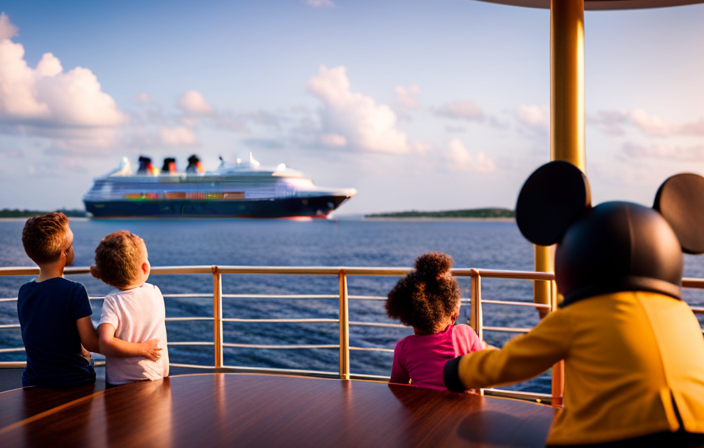
Picture embarking on an enchanting voyage with captivating characters, exciting escapades, and lasting memories. That’s precisely what you’ll encounter on a Disney Cruise. With my passion for all things Disney and extensive travel experience, I am here to help you navigate through the age restrictions required for this extraordinary journey.
Whether you are bringing infants, children, teens, or adults, Disney Cruise has something for everyone. From special considerations for pregnant women to planning a birthday celebration, I will help you navigate the ins and outs of cruising with Disney.
With recommended itineraries for different age groups and tips to ensure a truly magical experience, this article will be your go-to resource for all things Disney Cruise.
So, grab your Mickey ears and prepare to set sail on a journey of a lifetime with Disney Cruise.
Key Takeaways
- Disney Cruise age policies require guests to be at least 6 months old at embarkation, with some itineraries having minimum age requirements of 1 year or older.
- Children under 18 must be accompanied by a parent or guardian, and each stateroom must have at least one guest who is 18 or older.
- Staterooms have amenities for infants, and there is a nursery available for children aged 6 months to 3 years.
- Age-appropriate activities and entertainment are provided for children, teens, and adults, ensuring a fun and enjoyable experience for guests of all ages.
Overview of Disney Cruise Age Policies
Get ready to set sail on a Disney cruise and discover the magical age policies that will make your family vacation unforgettable!
When it comes to age requirements for Disney cruises, there are a few important things to keep in mind.
-
First and foremost, all guests must be at least 6 months old at the time of embarkation. This is to ensure the health and safety of the youngest cruisers.
-
Additionally, certain itineraries may have minimum age requirements of 1 year or older.
-
It’s also worth noting that children under the age of 18 must be accompanied by a parent or guardian.
As for booking policies, each stateroom must have at least one guest who is 18 years or older.
Now that you know the age requirements, let’s dive into the specifics for infants and toddlers.
Age Requirements for Infants and Toddlers
Babies and little ones can join in on the magic of sailing the high seas with Mickey and friends on a magical voyage. Here are four things you should know about infant accommodations and toddler activities on a Disney Cruise:
-
Staterooms are equipped with convenient amenities for infants, such as cribs and diaper disposal units, to ensure a comfortable stay for the whole family.
-
Disney Cruise offers It’s a Small World Nursery, a dedicated space for little ones aged 6 months to 3 years, where they can play, nap, and be cared for by trained professionals.
-
Toddlers can enjoy age-appropriate activities and entertainment options, including character meet-and-greets, splash zones, and interactive play areas like the Nemo’s Reef water play area.
-
Disney Cruise also offers onboard babysitting services for parents who want to enjoy some adult time, with trained counselors available to engage and entertain children.
Now, let’s move on to the next section about age requirements for children and teens.
Age Requirements for Children and Teens
Children and teens aboard the ship can look forward to age-appropriate activities and entertainment options. Disney Cruise Line offers a variety of experiences for different age groups to ensure everyone has a fantastic time. Let’s take a look at the age restrictions and travel documents required for children and teens.
| Age Group | Age Restrictions | Travel Documents Required |
|---|---|---|
| Children | 3-12 years old | Birth certificate |
| Tweens | 11-14 years old | Birth certificate |
| Teens | 14-17 years old | Government-issued ID |
Parents can rest assured that their children will have a blast participating in age-specific activities and making new friends. From themed parties to karaoke contests and sports tournaments, there is always something exciting happening onboard.
Now, let’s move on to the age requirements for adults and the additional documents they need to bring.
Age Requirements for Adults
Are you ready to embark on a magical adventure and discover the age requirements for adults on this incredible voyage? As an adult traveler, there are certain guidelines to keep in mind when planning your Disney cruise experience. Here are some important details to consider:
-
Traveling alone: If you’re a solo traveler, you must be at least 18 years old to book a Disney cruise.
-
Group travel: If you’re traveling with a group of adults, all members must be at least 18 years old to book a Disney cruise.
-
Traveling with multiple generations: Now that we’ve covered the age requirements for adults, let’s delve into the exciting world of traveling with multiple generations.
By following these age requirements, you can ensure a fantastic and memorable Disney cruise experience. So, let’s now explore how Disney cruises cater to the needs of multi-generational families and create unforgettable memories for everyone involved.
Traveling with Multiple Generations
Embarking on a magical voyage with multiple generations allows for a truly unforgettable Disney cruise experience. Disney understands the importance of multi-generational travel and strives to provide activities that appeal to all ages.
Whether it’s grandparents, parents, or children, there are endless family-friendly activities to enjoy onboard. From character meet-and-greets to Broadway-style shows, there is something for everyone. The little ones can participate in youth clubs and splash around in the pools, while the adults can relax at the spa or indulge in exquisite dining options.
Disney cruises offer a perfect balance of fun and relaxation for every member of the family.
Now, let’s explore the booking policies for minors, ensuring a smooth and hassle-free experience for families of all sizes.
Booking Policies for Minors
To ensure a stress-free family voyage, it’s important to familiarize yourself with the booking policies for minors on a Disney cruise. Here are three key booking restrictions to keep in mind:
-
Age requirements: Disney cruise lines have specific age requirements for unaccompanied minors. Children must be at least 18 years old to book a stateroom without an accompanying adult.
-
Parental consent: For children under 18 years old, parental consent is required to book a Disney cruise. This ensures that parents are aware of their child’s travel plans and can provide necessary authorization.
-
Supervision: It’s important to note that while Disney cruises offer a variety of kids’ clubs and activities, parents are responsible for supervising their children at all times. This ensures the safety and well-being of all passengers, especially minors.
Understanding these booking policies and restrictions will help you plan your Disney cruise smoothly.
Now, let’s explore the special considerations for pregnant women.
Special Considerations for Pregnant Women
Navigating the journey while expecting brings forth a unique set of factors for pregnant women on a Disney cruise. It is important to note that Disney Cruise Line has specific policies and restrictions in place for pregnant guests.
Generally, women who are 24 weeks or more into their pregnancy at the time of sailing are not allowed to embark on the cruise. Additionally, certain cruise activities, such as the use of whirlpools and certain water slides, may not be recommended for pregnant women.
However, there are still plenty of enjoyable activities for expectant mothers to partake in, such as character meet and greets, live shows, and spa treatments. These options ensure that pregnant women can still have a magical experience on a Disney cruise.
Looking forward, let’s now explore planning a birthday or special celebration on a Disney cruise.
Planning a Birthday or Special Celebration on a Disney Cruise
Celebrate your special day in style by planning a birthday or special celebration on a Disney cruise. With a variety of birthday party ideas and special occasion packages, Disney cruises offer an unforgettable experience for guests of all ages.
Whether you’re celebrating a milestone birthday or simply want to make your special day extra memorable, Disney has you covered. From personalized decorations and themed parties to gourmet dining and exclusive character meet-and-greets, there’s something for everyone.
Imagine blowing out your candles with Mickey Mouse or dancing the night away with your favorite princess. It’s a magical way to create lasting memories.
And as we transition to the next section about recommended itineraries for different age groups, you’ll discover even more ways to make your Disney cruise experience truly unforgettable.
Recommended Itineraries for Different Age Groups
Embarking on a Disney cruise is like setting sail on a voyage tailored to each age group. Recommended itineraries cater to the unique interests and preferences of every guest. Disney Cruise Line offers a variety of itineraries designed to ensure a magical experience for all. Here are three recommended itineraries for different age groups:
-
For families with young children, the Disney Fantasy offers a seven-night Eastern Caribbean cruise. This itinerary includes stops at Castaway Cay and other exciting ports of call.
-
Teens will love the Disney Dream’s four-night Bahamian cruise. This itinerary includes a stop at Disney’s private island, Castaway Cay. Onboard, there are plenty of activities and entertainment just for them.
-
Adults looking for a relaxing getaway can enjoy a seven-night Alaskan cruise on the Disney Wonder. This itinerary is complete with stunning scenery, gourmet dining, and adult-exclusive areas.
These recommended itineraries are just a taste of the incredible experiences available on a Disney cruise. In the next section, we’ll explore tips for ensuring a magical experience for all ages.
Tips for Ensuring a Magical Experience for All Ages
To make the most of your magical adventure on a Disney cruise, here are some helpful tips that will ensure a memorable experience for everyone on board.
First and foremost, Disney cruises are committed to ensuring accessibility for disabled individuals. They have accessible staterooms, elevators, and ramps throughout the ship, making it easy for everyone to navigate and enjoy all the amenities.
Additionally, their dining options cater to even the pickiest eaters. With a wide range of restaurants and menus, you can find something to satisfy every palate. Whether you have dietary restrictions or just a selective eater in your group, the Disney cruise staff will go above and beyond to accommodate your needs.
So sit back, relax, and let the magic unfold as you embark on a Disney cruise that truly caters to everyone’s needs.
Frequently Asked Questions
What are the dining options available for children and teens on a Disney cruise?
Children on a Disney cruise can enjoy a specialized children’s menu with kid-friendly options like chicken nuggets and macaroni and cheese. Teens also have their own dining options, with trendy choices like burgers and pizza.
Can adults participate in the children and teen activities onboard?
Yes, adults can participate in the fun-filled children and teen activities onboard. However, there may be age restrictions for live shows and entertainment, so it’s best to check with the cruise staff.
Are there any restrictions on pregnant women for participating in shore excursions?
Pregnant women may have restrictions on participating in shore excursions due to safety concerns. It is recommended to consult with your healthcare provider and the cruise line for specific guidelines and restrictions.
Are there any age limits for attending the live shows and entertainment onboard?
Step right up to the enchanting world of Disney Cruise Line! While the magic knows no bounds, please note that certain live shows and entertainment onboard may have age restrictions for our younger guests.
Can grandparents or other family members accompany minors on a Disney cruise without their parents?
Yes, grandparents and other family members can accompany minors on a Disney cruise without their parents. Disney cruises offer special programs and activities for children, ensuring a safe and enjoyable experience for all.
Conclusion
In conclusion, embarking on a Disney Cruise is an enchanting experience for all ages. From infants to adults, there are age-specific activities and amenities to ensure everyone has a magical time.
Whether you’re exploring the Caribbean or sailing to Alaska, the Disney Cruise age policies cater to a wide range of age groups.
So, whether you’re a little one meeting princesses or an adult indulging in fine dining, a Disney Cruise promises an unforgettable journey.
So pack your bags and prepare for a voyage filled with wonder and joy!
Alfons is the visionary leader and driving force behind Voyager Info’s success. As the Editor in Chief, he brings a wealth of experience and an unwavering passion for travel to the helm of our cruise-centric platform.
With a lifelong fascination for exploring new horizons, Alfons discovered his love for the ocean and cruising at a young age. From sailing across pristine Caribbean waters to embarking on daring expeditions to far-flung destinations, he has amassed a treasure trove of first-hand experiences in the world of cruising.
Cruise News and Updates
Safely Experience And Support The Future Of Cruises In 2021

Howdy! While we make our way through the unpredictable challenges brought on by the global health crisis, the cruise industry is undoubtedly one of the hardest hit sectors. However, do not despair, fellow journey-seekers, as it appears that there is a glimmer of hope on the horizon!
In this article, we will delve into the exciting world of cruises in 2021 and explore how we can safely experience and support their future.
Like a sturdy anchor, the Centers for Disease Control and Prevention (CDC) has laid out requirements for test cruise volunteers, ensuring that we set sail with utmost caution. These requirements include being 18 years or older, fully vaccinated against COVID-19 or having no high-risk medical conditions, and agreeing to COVID-19 testing. These test cruises serve as a simulation, allowing cruise lines to fine-tune their operations and ensure the safety of both crew and passengers.
So, grab your life jackets and join me as we embark on a journey to discover the ins and outs of these test cruises. From embarkation to dining, entertainment to medical evacuation procedures, we will explore it all.
Let’s set sail and support the future of cruises in 2021!
Key Takeaways
- CDC requirements for test cruise volunteers include being 18 years or older, fully vaccinated against COVID-19 or having no high-risk medical conditions, and undergoing COVID-19 symptom evaluations before embarkation and disembarkation.
- The purpose of test cruises is to ensure safe operation during the global health crisis and simulate the passenger experience.
- Test cruises must be at least 2-7 days in duration with at least one overnight stay, and the CDC recommends a minimum voyage length of 3 days with 2 overnight stays.
- Simulated activities on test cruises include embarkation and disembarkation procedures, dining, entertainment, and medical evacuation procedures, isolation and quarantine measures, and protocols for recreational activities and shore excursions.
What is it?
I’ll explain what a test cruise is in 2021. A test cruise is a simulated voyage that cruise lines conduct to ensure safe operation despite the global health crisis. These cruises serve to test and evaluate the implementation of safety measures and protocols.
The purpose is to simulate the passenger experience and identify any areas that may need improvement. Test cruises typically last between 2-7 days, with at least one overnight stay. Safety is of utmost importance, and all volunteers must adhere to CDC requirements, such as being fully vaccinated against COVID-19 and undergoing pre and post-disembarkation COVID-19 testing.
While test cruises are not paid and cannot be part of employment conditions, volunteers have the opportunity to support the future of the cruise industry and contribute to the development of enhanced safety protocols.
Requirements for Volunteers
To volunteer for a test cruise in 2021, I must meet the CDC requirements, including being fully vaccinated against COVID-19 or having no high-risk medical conditions, and I must be willing to undergo COVID-19 testing before and after the cruise.
The evaluation process for volunteers will involve assessing their vaccination status and checking for any COVID-19 symptoms before embarkation and disembarkation.
The purpose of this evaluation is to ensure the safety of all participants and to simulate a real passenger experience. It is crucial for volunteers to comply with these requirements in order to support the future of cruises in 2021 and to help the industry operate safely amidst the global health crisis.
By following these guidelines, we can contribute to the development of effective protocols and measures that will allow cruise ships to resume operations in a responsible manner.
Test Cruise Details
The test cruises will have a duration of 2-7 days and will include at least one overnight stay. These cruises are designed to simulate the passenger experience and ensure safe operation despite the ongoing global health crisis. During the test cruises, various activities will be simulated, including embarkation and disembarkation procedures, dining, entertainment, and medical evacuation protocols.
Additionally, there will be simulated recreational activities such as casinos and spa services, as well as protocols for private-island and port of call shore excursions.
As for the sign-up process and selection for test cruises, currently, only Royal Caribbean has provided a sign-up form for volunteers. In the first week, they received 100,000 signatures. However, there haven’t been any announcements or updates regarding sign-up methods from Norwegian, Carnival, MSC, and Disney. The volunteer selection process for test cruises hasn’t been disclosed at this time.
Frequently Asked Questions
Can I bring my own food and beverages on a test cruise?
On a test cruise, passengers are not allowed to bring their own food and beverages. The cruise line provides all meals and drinks as part of the simulated passenger experience. Dietary restrictions can be accommodated upon request.
Will test cruise volunteers have access to all onboard amenities and services?
Test cruise volunteers are expected to have access to all onboard amenities and services. However, it is important to note that volunteers are not compensated for their participation in the test cruises.
Are there any restrictions on the number of passengers allowed on a test cruise?
Passenger capacity limits for test cruises are determined by the CDC. However, cruise lines that require vaccinations for passengers can bypass test cruises. Vaccination requirements are in place to ensure the safety of all participants.
How often will test cruises be conducted in 2021?
Test cruises will be conducted multiple times in 2021 as part of the cruise industry recovery and to ensure health and safety measures. The exact frequency of test cruises has not been specified.
Will test cruise volunteers be compensated in any way for their participation?
Test cruise volunteers will not be compensated for their participation. However, they will benefit from the opportunity to experience a simulated cruise, contribute to the safe operation of cruises, and help shape the future of the industry.
Claire, a creative soul with an unquenchable thirst for storytelling, is an integral part of the Voyager Info team. As a dedicated writer, she weaves captivating narratives that transport readers to enchanting cruise destinations and beyond.
Claire’s love affair with writing began at an early age when she discovered the magic of words and their ability to craft worlds and emotions. Her innate curiosity led her to explore various literary genres, but it was travel writing that truly captured her heart. Drawing inspiration from her own globetrotting adventures and encounters with diverse cultures, Claire embarked on a journey to become a travel writer par excellence.
-

 Cruise FAQs3 months ago
Cruise FAQs3 months agoHow To Turn On Cruise Control Tesla Model 3
-
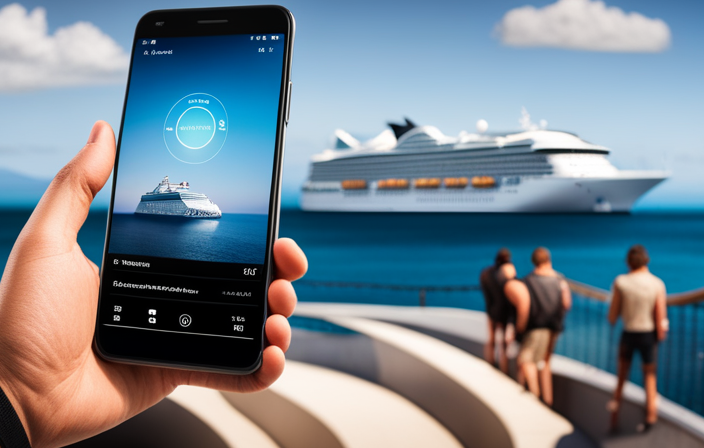
 Cruise FAQs3 months ago
Cruise FAQs3 months agoHow To Check Weather For A Cruise
-

 Cruise FAQs3 months ago
Cruise FAQs3 months agoHow To Get From Venice To Chioggia Cruise Terminal
-

 Cruise FAQs3 months ago
Cruise FAQs3 months agoHow To Set Cruise Control Tesla Model Y
-

 Cruise Lines3 months ago
Cruise Lines3 months agoHow Do You Qualify For An Ultra Cruise On Carnival
-
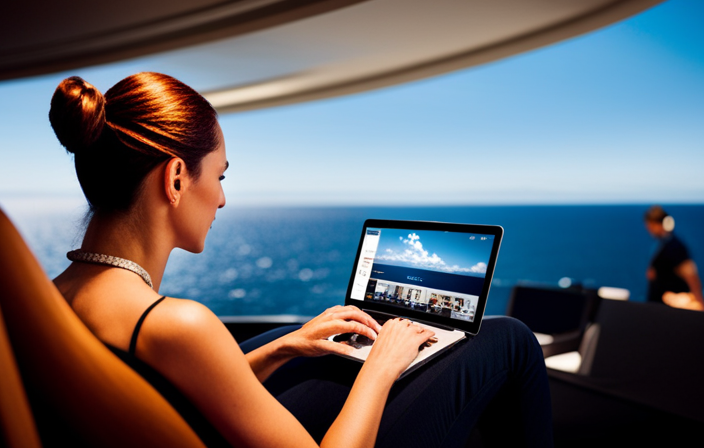
 Onboard Experience3 months ago
Onboard Experience3 months agoUltimate Guide To Ncl’s Onboard Wifi
-

 Port Guides3 months ago
Port Guides3 months agoHow To Get To Magens Bay From Cruise Port
-
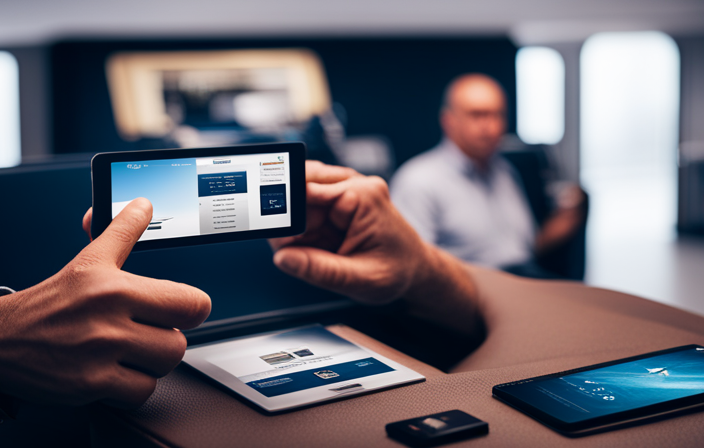
 Cruise FAQs3 months ago
Cruise FAQs3 months agoHow To Print Luggage Tags For Norwegian Cruise















